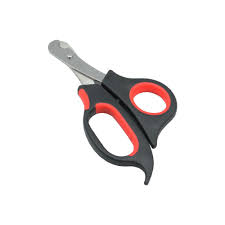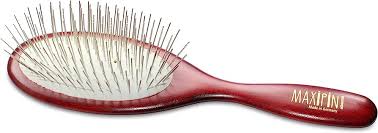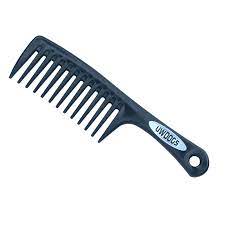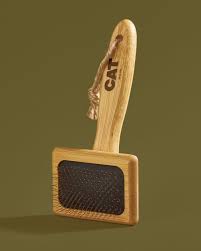Mastering Puppy Grooming: The Ultimate Guide for All Breeds!
- Peter Bonney Director
- Jul 24, 2023
- 8 min read
Introduction: Beyond the cuddles and play, it's crucial to introduce grooming from an early age. So Mastering Puppy Grooming: The Ultimate Guide for All Breeds! not only does this promote healthy puppy coats, teeth, gums, paws, and more, but it also fosters a strong sense of belonging, of being, of understanding for your Best Mate and you. Involving kids in the grooming process further deepens the bond between them and the puppy, cultivating a lifetime of positive interactions. So lets see Nurturing Bonds with Puppy Grooming: The Ultimate Guide for ALL breeds!

When involving kids in the puppy grooming process, using a stool or chair can have a significant impact on the dynamic between the child and the new puppy. Placing the child at a slightly higher position emphasises positive leadership and helps set boundaries within the family pack.

Dogs instinctively understand hierarchical structures, and by positioning the child on a stool, the puppy perceives the child as a gentle, yet authoritative figure. This not only fosters a sense of responsibility in the child but also reinforces the idea that grooming is a cooperative activity rather than a dominant-submissive interaction. By establishing this positive leadership through gentle grooming sessions, the bond between the child and the puppy grows stronger, paving the way for a harmonious and respectful relationship throughout their lives together.
Introducing grooming from an early age plays a crucial role in preparing puppies for stress-free visits to the vet and groomer. We discuss this at Puppy Magic. We suggest that clients be rubbing the puppies feet as often as they can. Regular grooming sessions, started in the puppy's formative weeks and months, expose them to various grooming tools, handling, and unfamiliar environments, which are often encountered during veterinary and grooming appointments. As puppies become accustomed to gentle brushing, nail trimming, and being touched in different areas, they develop a level of comfort and trust with human interactions. This familiarity with grooming routines helps reduce anxiety and fear associated with grooming or veterinary procedures. Puppies who have experienced positive grooming sessions from a young age are more likely to approach grooming and vet visits with confidence and ease, making the entire experience smoother and less stressful for both the puppy and their caregivers.
When embarking on the grooming journey with your puppy, it is essential to prioritise patience and understanding throughout the process. Puppies, particularly in their early stages of life, are highly sensitive to new experiences and environments. Rushing the grooming process can cause them to associate it with stress or discomfort, which may lead to future challenges during grooming sessions. Instead, adopt a gentle approach, avoiding any pushing or tight holding to control the puppy. Use a soothing voice and soft, gentle hands, and have some super high-value treats on hand. Reward the puppy with treats and praise when they relax, using a calm and relaxed tone as you say 'good boy'. This creates a positive association with grooming, making the experience enjoyable and stress-free for your new best mate.

Taking your time during grooming sessions has numerous benefits. By dedicating ample time and creating a calm and relaxed atmosphere, the puppy gradually learns to trust the grooming routine and the family members involved. Slowly introducing grooming tools, such as brushes and combs, while offering treats and gentle praises, helps reinforce positive associations with grooming. Moreover, the extra time spent during grooming allows the family to closely observe the puppy's reactions and body language. This enables early detection of any signs of discomfort or distress, enabling necessary adjustments to ensure the puppy's comfort and well-being. Remember, grooming is not just about maintaining the puppy's coat; it is a valuable opportunity to bond with your pet and build a strong foundation of trust that will contribute to a lifetime of harmonious grooming experiences.
1. Early Puppy Grooming: Nurturing with a Gentle Touch
Health and Hygiene: Grooming your puppy early on establishes good hygiene practices, preventing potential skin issues and discomfort.
Puppy's Comfort: Introducing gentle grooming techniques at a young age helps the puppy become accustomed to being touched and handled, reducing anxiety in future grooming sessions.
Positive Association: Early grooming experiences, coupled with treats and praises, create positive associations with grooming tools and the grooming process.
Clean Home environment: Grooming when young helps to keep the house free from dropped hair - shedding, which is more prevelent with some breeds over others. Some people can't have dogs with hair, which sheds as it can set off sinuses. In this case people will often choose Oodles - Labradoodles, Groodles and all the rest as they don't have hair - rather its more like a wool.
2. Fostering a Sense of Belonging through Grooming
Bonding Time: Grooming provides an opportunity for one-on-one bonding with your puppy, strengthening the emotional connection between you both.
Trust Building: Regular, gentle touch during grooming helps build trust and confidence in the puppy, making them feel safe and loved.
Understanding Your Puppy: Grooming allows you to observe your puppy's body closely, enabling you to identify any potential health concerns early on.
3. The Role of Kids in Puppy Grooming
Teaching Responsibility: Involving kids in grooming responsibilities instills a sense of responsibility and empathy towards animals.
Enhancing Empathy: Gentle and calm grooming interactions teach kids to empathise with their furry companions' needs and feelings.
Creating Lasting Memories: Grooming moments shared with kids create cherished memories and strengthen the bond between them and the puppy.
4. Benefits of Kids Helping with Grooming for a Lifetime
Lifelong Positive Associations: When kids actively participate in grooming from an early age, it fosters positive associations with grooming activities throughout their lives.
Reducing Fear of Grooming: Familiarity with grooming routines from childhood helps kids overcome any fear or anxiety associated with grooming dogs.
Strengthening the Human-Puppy Bond: The shared grooming experiences form lasting connections between kids and the family's puppy.

Grooming - Short Coats, Mid Coats, and Long Coats: Do's and Don'ts:
Grooming as we have discussed is essential for maintaining a healthy and happy pup and their understanding of being touched by humans. Grooming is suitable and necessary for ALL breeds. Let's break it down into three categories: Short Coats, Mid Coats, and Long Coats. For each group, we'll include the do's and don'ts, potential dangers of using the wrong equipment, and a selection of the necessary grooming tools. It is important to remember that the items that are listed in this article are only a very few. You will make your own choice but perhaps this can act as a guide for you. DOgs and the equipment that humans use can be very "Fashionable" one day and gone the next so I have not tried to give you a comprehensive list of whats available.
1. Short Coats:
Do's:
Brush regularly with a soft bristle brush to remove loose hair and debris.
Use a rubber grooming mitt or hound glove to massage and stimulate the skin.
Occasionally bathe your puppy using a mild dog shampoo, with particular attention to sensitive areas like the face, belly, and paws. You need not bathe your puppy every week; instead, aim for intervals of 4 to 6 weeks between baths. Unless they have been playing in cow poo.
Read the article on bathing for our puppies.
Trim nails regularly to prevent overgrowth and potential injuries.
Check ears weekly for dirt, wax, or infection signs.
Don'ts:
Avoid using harsh bristle brushes that can irritate the skin.
Don't bathe too frequently, as it may strip natural oils from the coat.
Avoid pulling or tugging at mats; instead, gently detangle them with a comb. It's always a great idea to carry a set of LONG Tweezers to make it easier to get them out.
Don't cut the nails too short. It may cause the puppy to bleed.
Don't brush hard - soft and gentle
Dangers/Issues with Wrong Equipment:
Using sharp or stiff brushes can cause skin irritation and discomfort.
Using some bathing products may cause irritations - choose appropriate cleaning and washing ingredients. Don't wash out their natural oils.
Equipment Needed:
Soft bristle brush
Rubber grooming mitt or hound glove
Mild dog shampoo
Dog nail clippers or grinder
Ear cleaning solution and cotton balls
2. Mid Coats:
Do's:
Brush regularly with a slicker brush to remove loose hair and prevent matting.
Use a wide-toothed comb to detangle and neaten the fur.
Bathe every 4-6 weeks with a dog-specific conditioner to maintain coat health.
Trim hair around the paw pads and sanitary areas.
Check ears and eyes regularly for any signs of irritation or infection.
Don'ts:
Avoid using a slicker brush with too much pressure to prevent skin irritation.
Don't shave your pup unless necessary, as their coat helps regulate body temperature. This may be different if your Vet suggests that this is necessary.
Dangers/Issues with Wrong Equipment:
Using a slicker brush aggressively can cause brush burn and discomfort for the dog.
Shaving a mid coat too short can lead to sunburn or exposure to harsh elements.
Equipment Needed:
Slicker brush
Wide-toothed comb
Dog-specific conditioner
Scissors or clippers for trimming
3. Long Coats:
Do's:
Brush daily with a pin brush or slicker brush to prevent tangles and matting.
Use a stainless steel comb to remove any remaining tangles and keep the coat neat.
Bathe every 2-4 weeks with a dog-specific conditioner to maintain cleanliness and coat health.
Trim hair around the paws, ears, and tail for hygiene purposes.
Regularly check for parasites such as ticks and fleas, as they can easily hide in long coats.
Don'ts:
Avoid rushing through brushing, as it may lead to missed tangles and matting.
Don't use regular human shampoo, as it can damage the dog's coat and skin.
Dangers/Issues with Wrong Equipment:
Using a pin brush with excessive force can cause discomfort and skin irritation.
Improperly maintained long coats can lead to painful matting, skin issues, and infections.
Equipment Needed:
Pin brush or slicker brush
Stainless steel comb
Dog-specific conditioner
Scissors or clippers for trimming
Flea comb for parasite checking
Different Brushes and Their Differences:
Bristle Brush: Ideal for short coats, it has soft, natural bristles that gently remove loose hair and dirt.
Slicker Brush: Suitable for mid to long coats, it has fine, short wires close together to remove loose hair and detangle fur.
Pin Brush: Designed for long coats, it has long, flexible pins to penetrate through the dense fur and remove tangles.
Rubber Grooming Mitt/Hound Glove: Useful for short coats, it is made of rubber with tiny nubs that trap loose hair and massage the skin.
Remember, every dog is unique, so adjust the grooming routine based on your puppy's specific needs. Regular grooming sessions not only keep their coats healthy but also provide valuable bonding time between you and your furry friend.
Professional Groomers can be a god send for many of us. Seek out groomers which are great with dogs and understand your needs too. Support them and your Vet by ensuring you keep the dog calm when ever you are grooming. If they start to get excited - stop, relax and when the dog is calm then start again. Cheers Peter

For those residing in Brisbane, Australia, Peter Bonney, a renowned master puppy trainer, recommends taking advantage of the "4 Training Steps to a Successful Dog" offered by Bonnies:
Step 1 - Puppy Magic: Designed for puppies up to 18 weeks old.
Step 2 - Best Mates: Focused on basic dog training and obedience for dogs older than 16 weeks.
Step 3 - Unleashed: Suitable for all breeds with good basic obedience skills.
Step 4 - Limitless: Weekly classes on Saturdays, without the need for prior booking.
When seeking dog training in Brisbane, it is essential to be cautious of self-proclaimed "experts." One should inquire about their actual experience and credentials. Owning a dog for a few years does not automatically make someone a qualified dog trainer. Instead of searching generically for "Dog Trainer Brisbane," consider looking for Bonnies, a reputable option for dog training. To find more information about their services, you can visit their website at www.bonnies.com.au. Additionally, you may explore Val Bonney's best-selling books on dogs, available for purchase at https://www.bonnies.com.au/shop-1.










Comments